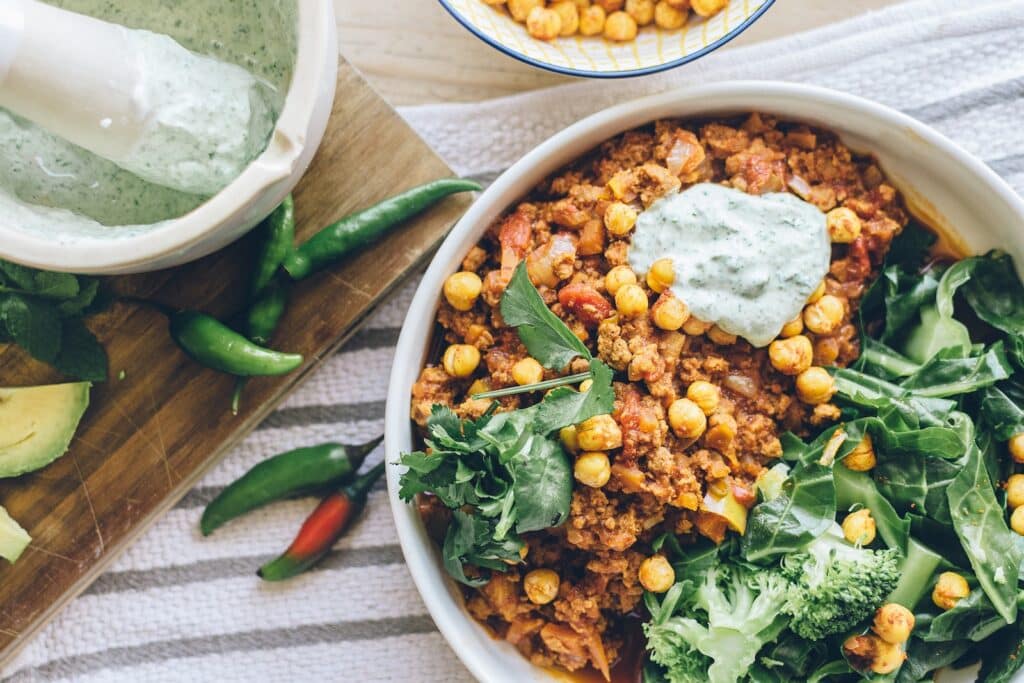For countless individuals worldwide, belly fat is not just an aesthetic concern but a persistent battle. A protruding abdomen or love handles might sometimes feel like they’ve set up permanent residence, even when one has tried seemingly every trick in the book to banish them. More than any wardrobe woes, the bulge around the waistline can be a symbol of hours spent at the gym with little to show, or a reminder of those delicious but perhaps regrettable dietary choices.
Yet, beyond how it may or may not alter one’s appearance, belly fat holds a more sinister implication. It’s not merely a superficial problem. Deep within, visceral fat surrounds our internal organs, which can contribute to a host of health issues if left unchecked. From increasing the risk of heart disease to Type 2 diabetes, the fat in our midsection carries weight in the discussion of overall well-being. Therefore, addressing and reducing belly fat becomes an imperative not just to slip into a favorite pair of jeans, but to foster a healthier, more vibrant life. In this article, we’ll delve into five proven strategies that can help in this endeavor, grounding aesthetic desires in a foundation of genuine health and wellness.
Understanding Belly Fat
When we talk about belly fat, it’s crucial to recognize that not all fats are created equal, especially concerning where they’re stored and the potential health implications they bring. Essentially, the fat in our abdominal region can be divided into two main categories: visceral fat and subcutaneous fat.
- Visceral Fat:
- Location: This type of fat is nestled deep within the abdomen, surrounding our vital organs such as the liver, stomach, and intestines.
- Appearance: It’s not the fat that you can pinch or grab; it’s hidden beneath the abdominal wall.
- Role: While visceral fat acts as a cushion to protect our internal organs, excessive amounts can be harmful.
- Subcutaneous Fat:
- Location: Positioned right under the skin, this fat is the one you can feel when you pinch your waist or any other fatty area.
- Appearance: It constitutes the majority of our body’s fat and is responsible for the visible accumulation of fat.
- Role: Besides being an energy reserve, subcutaneous fat acts as an insulator and helps regulate body temperature.
While both types of fat have their functions in the body, the real concern emerges when there is an excess, particularly of visceral fat. Here’s why:
Health Risks of Excessive Visceral Fat
- Inflammatory Responses: Visceral fat is metabolically active and can produce inflammatory markers, leading to systemic inflammation.
- Increased Insulin Resistance: An excess of visceral fat can reduce the effectiveness of insulin, a hormone that regulates blood sugar. This can be a precursor to Type 2 diabetes.
- Heart Diseases: High levels of visceral fat are linked to higher LDL (bad cholesterol) and lower HDL (good cholesterol), increasing the risk of cardiovascular diseases.
- Hormonal Imbalances: Visceral fat can influence the secretion of certain hormones and proteins which might affect appetite, weight, and even mood.
- Higher Risk of Certain Cancers: Excessive visceral fat has been linked to a higher risk of breast cancer, colorectal cancer, and more.
While both visceral and subcutaneous fats play roles in our body’s functions, an imbalance, especially an accumulation of visceral fat, can pave the way for several health issues. Addressing and managing this internal fat becomes paramount not just for aesthetic desires, but more significantly, for holistic health and longevity.
Tip #1: Optimize Your Diet

Tackling belly fat often begins at the most fundamental level: our diet. What we consume can either support our fat-burning endeavors or deter them. Here’s a focused approach to reshaping our dietary habits:
- Cut Out Processed Sugars and Unhealthy Fats:
- The Issue with Processed Sugars: Consuming foods and drinks high in processed sugars (like sodas, candies, and many desserts) leads to a quick spike in blood sugar. When the body has excess sugar that it can’t use for energy immediately, it converts and stores it as fat.
- Unhealthy Fats to Avoid: Trans fats, often found in packaged snacks, baked goods, and some margarines, can lead to fat accumulation, particularly around the abdomen. They also raise bad cholesterol levels, compounding health risks.
- Smart Swaps: Opt for natural sweeteners like honey or maple syrup in moderation, and embrace healthier fats like avocados, nuts, and olive oil.
- Increase Intake of Fiber-rich Foods:
- Why Fiber?: Dietary fiber, especially soluble fiber, slows the absorption of sugar, which can improve blood sugar levels. Furthermore, it makes you feel full, leading to reduced calorie intake.
- Go-to Fiber Sources: Foods like oats, beans, lentils, fruits (e.g., apples and pears), and leafy greens are rich in fiber and should be staples in your diet.
- Digestive Benefits: Regular fiber intake also supports a healthy gut, which is essential for digestion and preventing bloating, giving a flatter belly appearance.
- Stay Hydrated:
- Water & Metabolism: Adequate hydration is pivotal for metabolic processes, including the efficient burning of fat. When dehydrated, the body’s ability to burn calories might get compromised.
- Flush Toxins: Water assists in flushing out toxins and excess sodium, reducing bloating and promoting a healthy digestive system.
- Hydration Tips: Aim for at least 8 glasses a day, more if you’re active. Infuse with lemon or cucumber for added flavor and detoxifying benefits.
- Prioritize Lean Proteins:
- Muscle Building: Proteins are the building blocks of muscles. By consuming sufficient protein, you can support muscle growth, which is essential as muscles naturally burn more calories than fat.
- Feeling Full: Protein-rich foods can increase feelings of fullness, reducing overall calorie consumption.
- Sources of Lean Protein: Opt for sources like chicken, turkey, fish, tofu, legumes, and low-fat dairy. These not only provide protein but also other essential nutrients without adding excessive fat.
In essence, an optimized diet isn’t about severe restrictions but smart choices. By focusing on nutrient-rich foods and cutting down on processed ones, we pave the way for not just a flatter belly, but also holistic health.
Tip #2: Incorporate High-Intensity Interval Training (HIIT)

As we dive into the world of exercise, one method stands out for its impressive efficiency in torching fat: High-Intensity Interval Training, commonly known as HIIT.
- What is HIIT?
- Definition: HIIT involves short bursts of intense exercise alternated with low-intensity recovery periods. Essentially, it’s a cardio session arranged as short, sharp bursts of very hard work.
- Duration: A typical HIIT workout can range from 10 to 30 minutes in duration.
- Structure: For instance, you might push yourself as hard as possible for 30 seconds and then rest or perform at a very low intensity for the next 30-60 seconds.
- Benefits of HIIT for Fat Burning:
- Caloric Burn: The intensity of the workouts burns more calories in a shorter time compared to moderate-intensity exercises.
- Afterburn Effect: HIIT can produce the ‘afterburn’ effect, or excess post-exercise oxygen consumption (EPOC), meaning the body continues to burn calories at an elevated rate even after the workout is done.
- Targeting Belly Fat: Studies have shown that HIIT workouts can particularly help reduce both visceral and subcutaneous belly fat, making it a potent tool for those targeting the midsection.
- Efficiency: For those with busy schedules, HIIT provides an effective workout in less time.
- Sample HIIT Workouts:
- Treadmill Blasts: After a warm-up, sprint at maximum effort for 30 seconds, followed by a 1-minute walk or slow jog. Repeat for 10-20 minutes.
- Bodyweight Circuit: Rotate through exercises like jump squats, burpees, high knees, and push-ups. Do each for 30 seconds at full intensity, followed by a 30-second rest.
- Jump Rope: Go all out for 30 seconds, then rest or skip slowly for 30 seconds. This simple routine can be surprisingly intense!
- Tabata Protocol: This is a popular form of HIIT that involves 20 seconds of all-out effort followed by 10 seconds of rest, repeated for 4 minutes.
Remember, while HIIT is effective, it’s also challenging. It’s essential to start at your current fitness level and gradually increase intensity. And as with any exercise regimen, it’s crucial to consult with a fitness professional to ensure proper form and safety.
Tip #3: Get Enough Sleep

While diet and exercise often steal the spotlight in discussions about weight loss, the unsung hero in this journey is undoubtedly sleep. Its role in maintaining optimal body weight and particularly in managing belly fat is profound.
- Relationship Between Sleep and Weight Gain:
- Caloric Intake: Lack of sleep can increase feelings of hunger. This is often due to an imbalance in the hunger hormones leptin (which signals fullness) and ghrelin (which signals hunger). When sleep-deprived, ghrelin levels rise, and leptin levels drop, leading to increased calorie intake.
- Reduced Energy Expenditure: Feeling tired can reduce one’s motivation to exercise and overall physical activity during the day.
- Poor Choices: Sleep deprivation can lead to cravings for sugary and fatty foods, contributing to higher calorie intake and, subsequently, weight gain.
- Importance of Sleep in Hormonal Balance:
- Stress Hormones and Belly Fat: Chronic lack of sleep can elevate cortisol levels, a stress hormone. Elevated cortisol levels, especially in the evening, are associated with increased belly fat storage.
- Insulin Sensitivity: Sleep plays a role in maintaining insulin sensitivity. Reduced sensitivity can lead to higher blood sugar levels, which can, over time, increase fat storage.
- Recovery and Growth Hormone: Sleep is when the body releases growth hormone, which aids in tissue repair, muscle growth, and fat metabolism.
- Tips for Improving Sleep Quality:
- Consistent Schedule: Going to bed and waking up at the same time, even on weekends, can help regulate the body’s internal clock.
- Sleep-Optimized Environment: Ensure the bedroom is dark, quiet, and cool. Consider using earplugs, an eye mask, or a white noise machine if needed.
- Limit Screen Time: The blue light emitted by phones, tablets, and computers can interfere with melatonin production, a hormone that regulates sleep. Try to avoid screens at least an hour before bedtime.
- Mind Your Diet: Avoid large meals, caffeine, and alcohol before bedtime. These can disrupt sleep or reduce its quality.
- Relaxation Techniques: Practices such as reading, meditation, or deep breathing exercises can prepare the body and mind for a restful night.
In the quest to shed stubborn belly fat, ensuring adequate and quality sleep is non-negotiable. It’s not merely about the hours spent in bed but the quality of those restful hours that count. By prioritizing sleep, we not only support our weight loss goals but also improve overall well-being.
Tip #4: Manage Stress

Stress might be an inherent part of our modern lifestyle, but its implications on our health and particularly our waistlines can’t be ignored. The intricate dance between stress, hormones, and belly fat requires attention if we aim to lead healthier lives.
- Chronic Stress and Weight Gain:
- Comfort Eating: Many people turn to ‘comfort’ foods under stress. These foods are often high in sugar, fat, and calories.
- Energy Storage: Physiologically, the body perceives chronic stress as an extended emergency. In response, it conserves energy by storing fat, especially in the abdominal area.
- Impaired Digestion: Chronic stress can interfere with our digestive system, leading to issues like bloating, which can make the belly appear more protruded.
- The Role of Cortisol:
- Cortisol Release: When we’re stressed, our body releases cortisol, a hormone designed to help us respond to immediate threats.
- Belly Fat and Cortisol: High cortisol levels, especially when sustained, can promote the storage of fat in the abdominal area. Visceral fat cells have a higher concentration of cortisol receptors, making them particularly responsive to stress.
- Other Health Implications: Prolonged elevated cortisol can lead to other health problems like disrupted sleep, high blood pressure, and reduced immune function.
- Suggestions for Stress-Reducing Techniques:
- Meditation: Taking out a few minutes daily to meditate can significantly reduce stress levels. Meditation helps in focusing on the present moment and alleviating anxiety.
- Deep Breathing Exercises: Techniques like the 4-7-8 method (inhale for 4 seconds, hold for 7, exhale for 8) can activate the body’s relaxation response.
- Regular Physical Activity: Exercise is a natural stress reliever. It releases endorphins, which are natural mood lifters. Even a short walk can be beneficial.
- Limit Caffeine and Sugar: Both can increase cortisol production. Opt for balanced diets and consider herbal teas, which can be soothing.
- Connect Socially: Social connections can offer emotional support, which can help in reducing stress. Spend time with loved ones, or consider joining support groups or community activities.
- Seek Professional Help: If chronic stress becomes overwhelming, consider counseling or therapy to address underlying issues and develop coping strategies.
While occasional stress is a natural response to challenges, chronic stress can have detrimental effects on our health and waistline. By adopting various techniques and habits, we can not only manage our stress but also prevent the unwelcome expansion of our midsections.
Tip #5: Strength Training and Core Exercises

While cardio exercises like running or cycling are commonly associated with fat loss, strength training, particularly exercises that target the core, play an invaluable role in shedding stubborn belly fat and sculpting the physique.
- Busting the Myth of Spot Reduction:
- The Reality: The notion of spot reduction, which suggests that one can target fat loss in specific areas of the body by exercising those areas, is largely a myth. However, strengthening specific muscle groups can improve the appearance and tone of that area.
- Why Core Training: While core exercises won’t magically melt away belly fat, a strong core can help improve posture, leading to a more upright and trim appearance. Furthermore, as the core muscles get stronger, they can become more defined, giving a toned look once the overlying fat reduces.
- Muscle-building and Metabolism:
- Increased Basal Metabolic Rate (BMR): Muscles, even at rest, consume more calories than fat. By increasing muscle mass through strength training, you elevate your BMR, meaning you burn more calories throughout the day, even when inactive.
- Long-term Fat Loss: The more muscle you have, the more energy your body expends to maintain that muscle, making it easier to maintain fat loss in the long run.
- Sample Core-targeting Exercises:
- Planks: A staple core exercise, planks engage the entire core. Hold a push-up position, keeping the body in a straight line, and engage the core for as long as possible.
- Russian Twists: Sitting on the floor, lean back slightly and twist the torso from side to side, optionally holding a weight or dumbbell.
- Leg Raises: Lying flat on the back, keep the legs straight and lift them up and down without letting the feet touch the ground.
- Mountain Climbers: In a plank position, bring one knee towards the chest and then quickly switch to the other knee, simulating a running motion.
- Full-body Strength Training:
- Compound Movements: Exercises like squats, deadlifts, and bench presses engage multiple muscle groups at once, leading to higher calorie burns and improved muscle growth.
- Functional Training: Movements that mimic everyday activities can help strengthen the core and other muscles, ensuring that the body works as a cohesive unit.
- Consistency: For noticeable results, strength training should be incorporated into one’s fitness routine at least 2-3 times a week.
While cardio exercises play a role in burning calories, it’s strength training that helps sculpt and tone the body. Focusing on the core can improve posture and appearance, but a holistic approach that engages the entire body will yield the most transformative results. Remember to always use proper form and, if unsure, seek guidance from fitness professionals to maximize benefits and avoid injuries.
Conclusion
Losing stubborn belly fat is more than just a cosmetic pursuit; it’s a journey toward improved health, well-being, and self-confidence. This journey isn’t defined by a single solution but is rather a holistic blend of various elements: an optimized diet, a balanced exercise regimen that incorporates both cardio and strength training, the restorative powers of quality sleep, and the mindful management of stress.
It’s important to emphasize balance. While each of the tips provided offers unique benefits, their collective impact is where true transformation can be found. Consistency is the golden key; sporadic efforts may yield temporary results, but it’s sustained commitment that will drive lasting change.
However, it’s vital to remember that each individual’s body is unique, and results can vary based on genetics, metabolism, and a host of other factors. There isn’t a one-size-fits-all approach, and what works wonders for one might not be as effective for another. This underscores the importance of seeking personalized advice and guidance. Before embarking on any significant lifestyle change, consulting with healthcare or fitness professionals can provide tailored recommendations and ensure that your efforts are both safe and effective.
In the end, the goal is not just a slimmer waistline but a healthier, more vibrant life. Embrace the journey with patience, knowledge, and perseverance, and remember that every positive step, no matter how small, is progress in the right direction.







